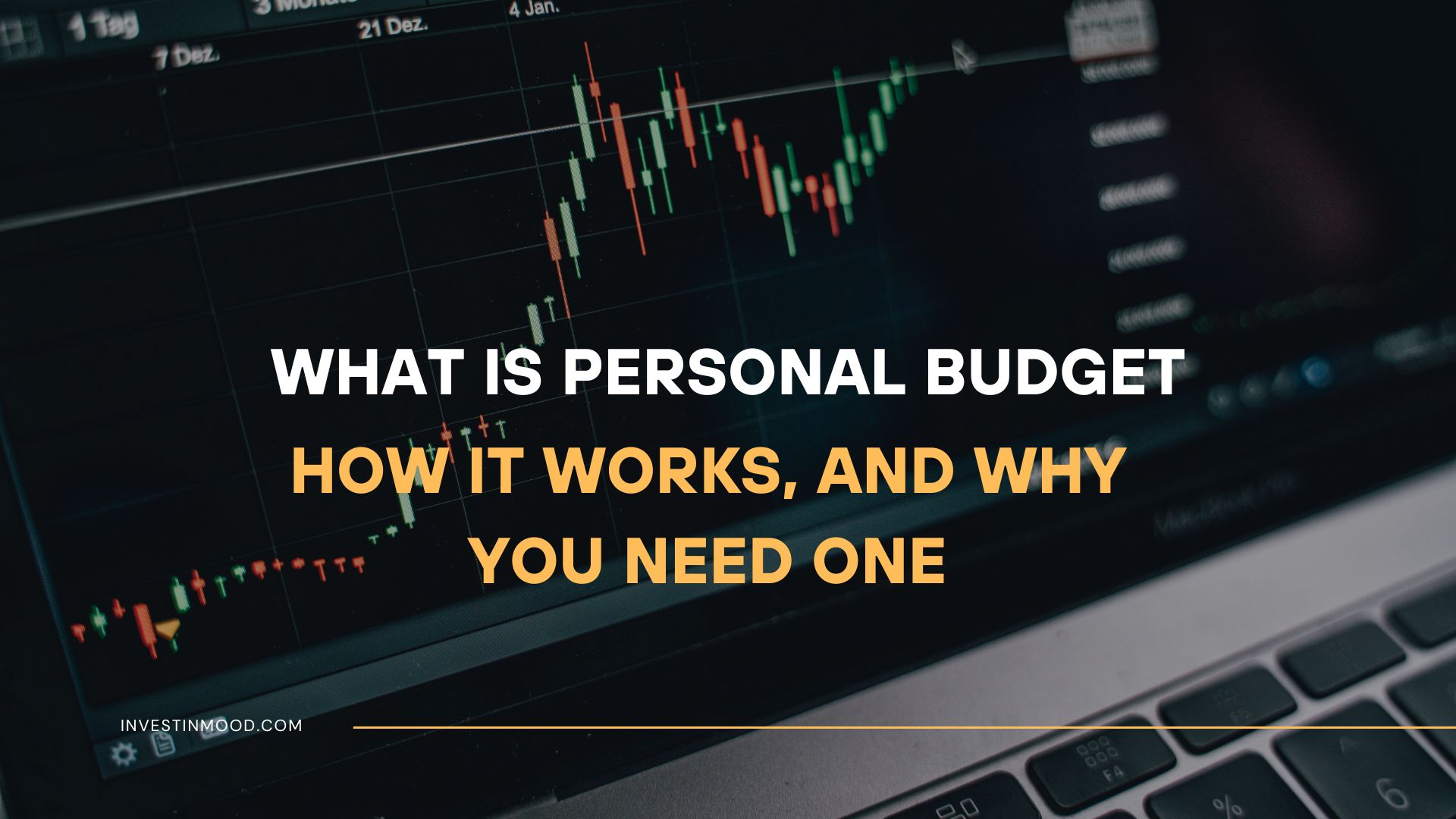
What Is Personal Budget, How It Works, and Why You Need One
Personal budget is a strategic plan for your money, detailing your income against your expenses over a set period. It’s the fundamental tool for taking control of your finances, eliminating debt, and building wealth. For individuals in the US, UK, Canada, and Australia, mastering the personal budget is the first step toward achieving financial goals like home ownership or a secure retirement.
Summary Table
| Aspect | Detail |
|---|---|
| Definition | A plan for how you will spend and save your money each month. |
| Also Known As | Spending Plan, Financial Plan, Money Management |
| Main Used In | Personal Finance, Household Financial Planning, Debt Management |
| Key Takeaway | It provides a clear picture of your financial health, empowering you to make informed decisions to reach your goals. |
| Formula | Income – Expenses = Savings (or Deficit) |
| Related Concepts |
What is a Personal Budget
A personal budget is more than just a list of numbers; it’s a dynamic financial blueprint. In its simplest form, it’s a plan that compares the money you have coming in (income) with the money you have going out (expenses and savings). Think of it as the GPS for your financial journey. Without it, you might still reach your destination, but you’ll likely take wrong turns, waste resources, and the trip will take much longer. With it, you have a clear, efficient route to your financial goals, whether that’s paying off credit card debt, saving for a down payment on a house in the UK, or investing for retirement in the US.
The Core Concept Explained
At its core, a personal budget measures the flow of your cash. It answers three fundamental questions:
- How much money do I make? (Total Income)
- Where is my money currently going? (Fixed and Variable Expenses)
- Where should my money be going to align with my goals? (Planned Spending and Saving)
A successful budget is one where your income is greater than or equal to your expenses, resulting in a surplus that can be directed toward savings and investments. A budget that reveals expenses higher than income (a deficit) is a critical red flag, indicating you are going into debt to fund your lifestyle. The act of budgeting involves tracking, categorizing, and actively deciding on the allocation of every dollar, pound, or other currency you earn.
Key Takeaways
How to Create a Personal Budget
While there is no single universal “formula,” the process of creating a budget follows a consistent framework. The core principle can be summarized as: Total Income – Total Expenses = Net Result (Surplus or Deficit). The goal is to engineer a surplus.
Step-by-Step Budget Creation Guide
- Gather Financial Data: Collect your bank statements, pay stubs, and bills from the last 2-3 months.
- Calculate Total Monthly Income: Sum all your after-tax income sources (salary, side hustles, investments).
- List Your Monthly Expenses: Categorize every expense. Common categories include:
- Fixed Costs: Rent/Mortgage, Car Payment, Insurance, Subscriptions.
- Variable Costs: Groceries, Dining Out, Gas, Entertainment.
- Savings & Debt Repayment: Emergency Fund, Retirement (IRA/401k), Extra Debt Payments.
- Compare and Adjust: Subtract your total expenses from your total income.
- If you have a Surplus: Allocate this money toward your financial goals (e.g., increase retirement contributions, build your emergency fund, or invest).
- If you have a Deficit: You must find areas to cut back on variable expenses or find ways to increase your income.
Example Calculation:
Let’s walk through a simplified example for an individual living in Toronto, Canada.
| Input Values | Amount (CAD) |
| Monthly Net Income | $4,500 |
| Fixed Expenses (Rent, Car, Insurance) | $2,200 |
| Variable Expenses (Food, Gas, Fun) | $1,500 |
| Current Savings/Debt Payment | $500 |
Calculation:
$4,500 (Income) – $2,200 (Fixed) – $1,500 (Variable) – $500 (Savings) = $300 Surplus
Interpretation: This individual has a monthly surplus of $300. This is a healthy position. They could decide to put the entire $300 toward their student loans to pay them off faster, split it between a Tax-Free Savings Account (TFSA) and a vacation fund, or use a tool like a budget app to automate this allocation.
Why a Personal Budget Matters for Financial Health
A budget is not about restriction; it’s about empowerment. It’s the single most important tool for transforming your financial life from reactive to proactive.
- For Everyone: It provides a clear, honest snapshot of your financial health, reducing anxiety and arguments about money. It shifts the question from “Can I afford this?” to “Does this fit my plan?”
- For Savers & Investors: A budget is the engine of wealth creation. It identifies the surplus cash that can be directed into investments like index funds in the US or ISAs in the UK, allowing compound interest to work its magic.
- For Debt Management: It’s your primary weapon against debt. By highlighting wasteful spending, a budget frees up cash to make extra debt payments, significantly reducing interest costs and the time to become debt-free.
- For Goal Achievement: Whether it’s saving for a down payment on an Australian home, a child’s education, or a comfortable retirement, a budget creates a realistic and actionable roadmap to get there.
How to Use a Personal Budget in Your Financial Strategy
A budget is useless without implementation. Here are specific ways to put it into practice.
- Use Case 1: The Zero-Based Budget (Every Dollar Has a Job)
- Action: Allocate every dollar of your income to a specific expense, savings, or debt category until your income minus your allocations equals zero.
- Benefit: Maximizes intentionality and ensures no money is “wasted” or disappears unnoticed. Popularized by <a href=”https://www.nerdwallet.com/article/finance/what-is-zero-based-budgeting” target=”_blank” rel=”noopener”>systems like You Need A Budget (YNAB)</a>.
- Use Case 2: The 50/30/20 Rule (A Proportional Guideline)
- Action: Structure your budget so that 50% of your after-tax income goes to Needs, 30% to Wants, and 20% to Savings and Debt Repayment.
- Benefit: Provides a simple, balanced framework for those new to budgeting, preventing them from becoming overwhelmed.
- Use Case 3: The “Debt Snowball” Method
- Action: Use your budget to find extra money. List your debts from smallest to largest balance. Pay minimums on all, but throw every extra dollar from your budget at the smallest debt until it’s gone. Then, roll that payment into the next smallest debt.
- Benefit: Creates quick psychological wins, building momentum for staying on budget and becoming debt-free.
Sticking to a budget is easier with the right tools. To track your spending and savings effectively, you need a reliable platform. We’ve reviewed the best personal finance apps and online banks to help you automate your financial plan.
Finding Your Fit: A Guide to Popular Budgeting Methods
Not all budgets are created equal. Different personalities and financial situations call for different approaches. Here’s a breakdown of the most common methods to help you choose.
- 1. The 50/30/20 Budget (The Simple Guideline)
- How it Works: You split your after-tax income into three buckets: 50% for Needs, 30% for Wants, and 20% for Savings/Debt Repayment.
- Best For: Beginners, those who want a simple, flexible framework without detailed tracking.
- Considerations: It can be too rigid for those in high-cost-of-living areas where Needs exceed 50%.
- 2. The Zero-Based Budget (The Every-Dollar Plan)
- How it Works: You give every single dollar a job, so your Income minus your Expenses equals zero. If you have $100 left after bills, you assign it to a category like “Groceries,” “Savings,” or “Fun” until you have $0 unallocated.
- Best For: Detail-oriented people, those with tight finances, or anyone who wants maximum control.
- Considerations: Requires more time and effort to maintain each month.
- 3. The Envelope System (The Cash-Based Method)
- How it Works: You allocate cash for each spending category into physical envelopes. When the “Dining Out” envelope is empty, you stop spending in that category for the month.
- Best For: People who overspend with credit/debit cards, visual/tactile learners, and those who need a hard spending limit.
- Considerations: Inconvenient in a digital world; doesn’t work for online bills.
Beyond the Basics: The Psychology of Successful Budgeting
The technical part of budgeting is easy. The hard part is the mindset. Understanding these psychological aspects can be the difference between success and failure.
- Pay Yourself First: This is the golden rule. Before you pay any bills, automatically transfer a portion of your income to savings and investments. This treats savings as a non-negotiable expense, ensuring it actually happens.
- Plan for Irregular Expenses: Budget-busters like car repairs, holiday gifts, and annual insurance premiums are predictable. Divide the annual cost by 12 and save that amount each month in a dedicated “Sinking Fund” so the money is there when you need it.
- Conduct a Monthly Budget Review: At the end of each month, have a 15-minute “budget meeting” with yourself (and your partner). Compare your planned spending to your actual spending. Don’t judge—analyze. Ask, “What went well? What was a surprise? What should we adjust for next month?” This makes your budget a flexible, living tool.
- Celebrate Wins: Paid off a credit card? Reached a savings milestone? Celebrate it! Acknowledging progress reinforces positive behavior and keeps you motivated for the long haul.
- Control & Awareness You know exactly where your money is going, eliminating surprises.
- Goal Achievement It turns abstract goals into concrete, monthly action plans.
- Debt Reduction It’s the most effective way to systematically eliminate debt.
- Reduced Stress Eliminates the anxiety of wondering if you have enough money.
- Better Decisions Provides a data-driven basis for financial choices.
- Time-Consuming Setting up and maintaining a budget requires an ongoing time investment.
- Can Feel Restrictive If not framed correctly, it can feel like a financial diet, leading to burnout.
- Requires Discipline It only works if you are truthful about your spending and stick to the plan.
- Unexpected Expenses Life is unpredictable. An emergency fund is crucial to absorb shocks.
- Over-Complexity Getting bogged down in too many categories can make it unsustainable.
Personal Budget in the Real World: A Case Study
Consider “Sarah,” a marketing manager in London earning £45,000 annually. She felt she was doing okay but couldn’t save for a mortgage deposit. She decided to create a budget.
- The Problem: After tracking her spending, she discovered she was spending over £300 per month on unused subscriptions, expensive lunches, and impulse buys online. Her savings were negligible.
- The Budget Solution: She implemented a zero-based budget. She canceled unused subscriptions (£40/month), started meal prepping (£100/month saved), and set a strict “fun money” limit (£50/week). This freed up over £260 per month.
- The Result: Sarah automated a £260 transfer to a high-interest savings account the day she got paid. In one year, she saved over £3,120, plus interest. This tangible progress gave her the confidence and the capital to seriously begin her home-buying journey, something that felt impossible just a year earlier.
Conclusion
Ultimately, a personal budget is the foundational tool for transforming your financial life from a source of stress into a source of empowerment. It provides the clarity needed to make intentional decisions, the structure to eliminate debt efficiently, and the pathway to achieve your most important life goals. While it requires honesty, discipline, and regular review to overcome its limitations, the payoff is immense: financial control, security, and freedom. Start today by tracking your next month’s income and spending—you might be surprised by what you discover and empowered by what you can achieve.
Ready to put these concepts into action? The right tools are essential. We recommend starting with a free budget template from a reputable source like the Federal Trade Commission or exploring popular budgeting apps to find one that fits your style.
How a Personal Budget Relates to Other Concepts
A personal budget is a key component of personal finance, but it’s often confused with other terms.
| Feature | Personal Budget | Cash Flow Statement |
|---|---|---|
| What it measures | A forward-looking plan for income and expenses. | A historical record of past cash inflows and outflows. |
| Time Horizon | Future-oriented (e.g., next month). | Past-oriented (e.g., last month). |
| Primary Use | Proactive control and goal setting. | Reactive analysis of past financial activity. |
| Flexibility | Meant to be adjusted as plans change. | A fixed record of what already happened. |
Related Terms
- Emergency Fund: A budget identifies how much you can save to build this crucial financial safety net, which in turn protects your budget from being derailed by unexpected expenses.
- Net Worth: Your budget is the action plan that helps you increase your net worth (Assets – Liabilities) over time by creating surpluses to pay down debt and acquire assets.
- Zero-Based Budgeting: This is a specific, rigorous method of budgeting where every dollar of income is assigned a job.





